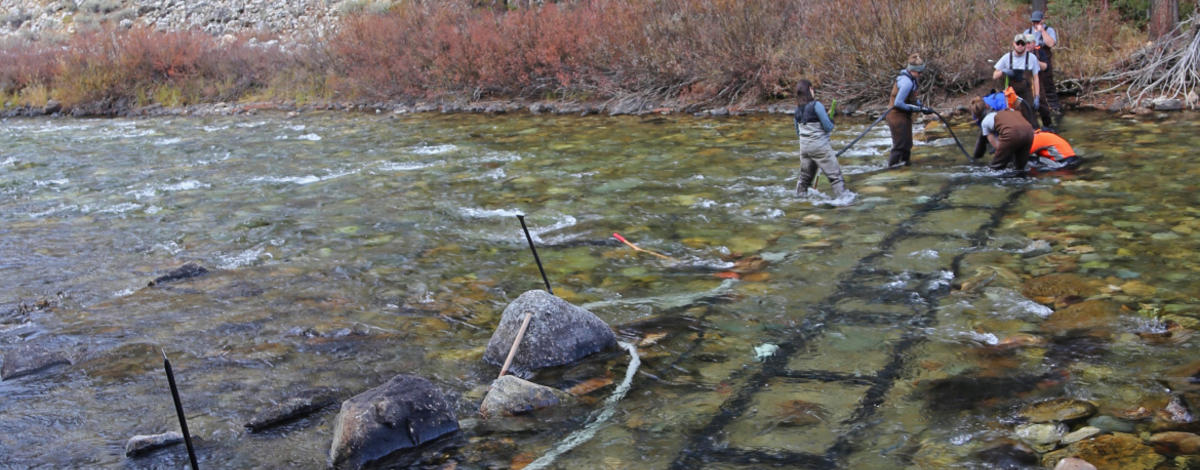In fall of 2019, a new instream detection system was installed on Marsh Creek which is at the headwaters of the Middle Fork Salmon River near Stanley, Idaho. This structure is essentially a series of antennas buried in the stream bed which detects salmon and steelhead that have been marked with a Passive Integrated Transponder (PIT) tag as they swim by.
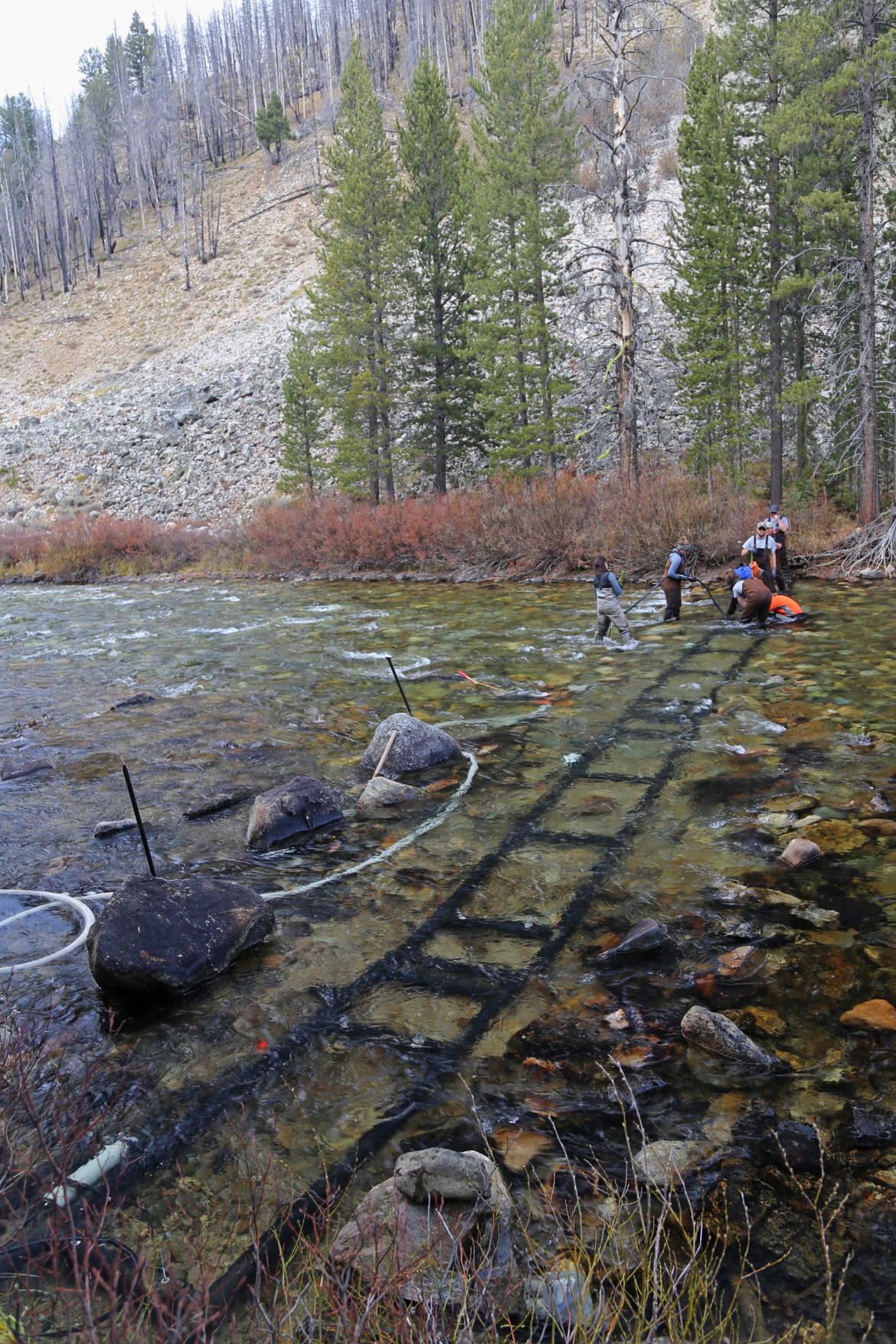
Fish are marked with PIT tags at various points throughout their life cycle including as juveniles on their trip to the ocean, and as they return to freshwater as adults.
Detection of adult Chinook Salmon at the Marsh Creek PIT array began in June, and so far 46 individuals have been detected. These fish provide insight into how and when this population migrates through the Columbia River system. For example, 14 Marsh Creek adult Chinook already had PIT tags before they started their upstream migration this spring. These fish were tagged as juveniles and are now returning from the ocean. The fish ladders on the main stem dams of the Columbia and Snake Rivers also have PIT tag detection systems, so we can track these fish throughout their entire migration path. One important piece of information is when these fish arrive at Bonneville dam which is the first dam they encounter on their upstream migration. The following graph shows that salmon from the Marsh Creek population passed Bonneville Dam in early May of 2021.
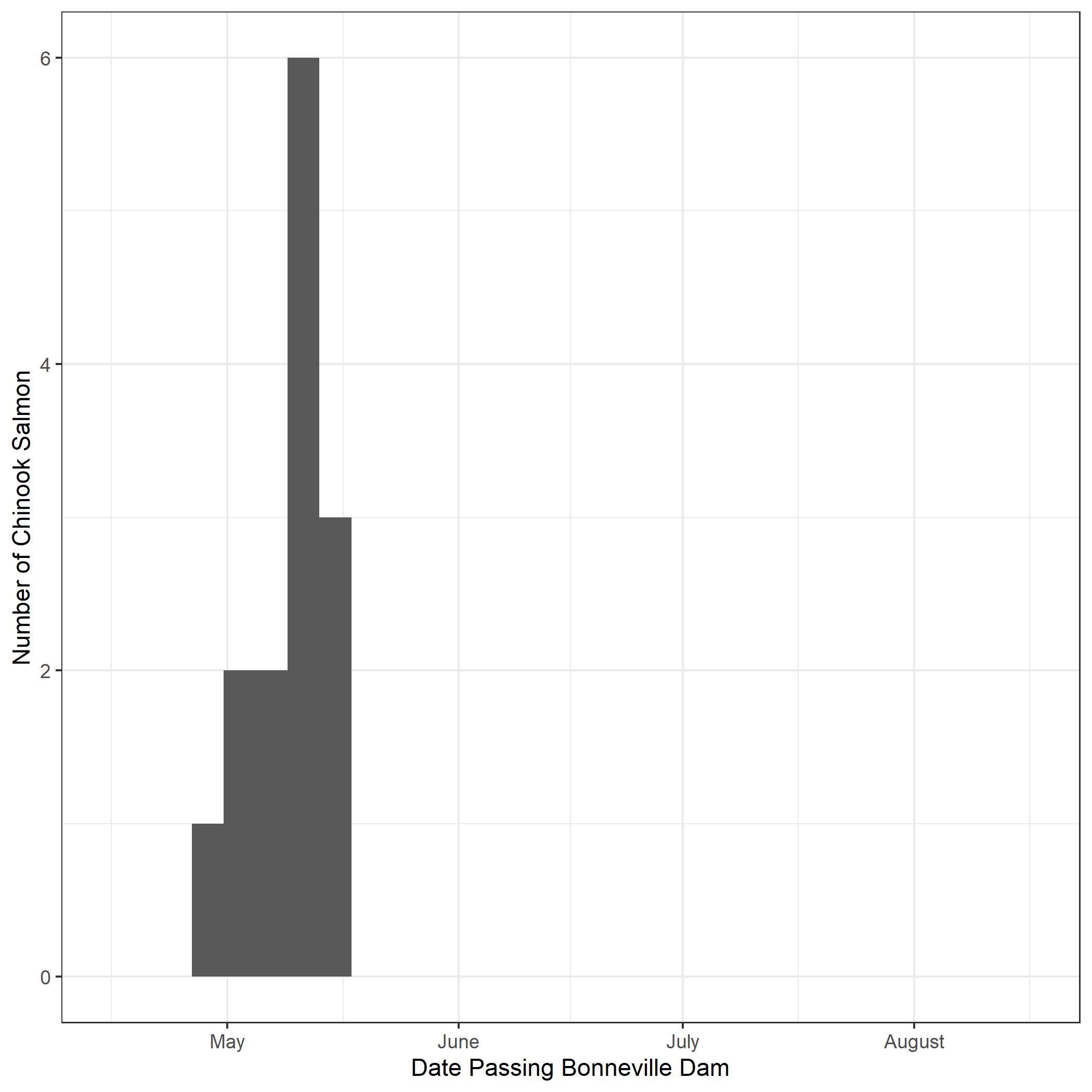
All 46 of the tagged Chinook that are currently in Marsh Creek were detected at Lower Granite Dam in some form or fashion. Some were already tagged as juveniles and some were tagged at Lower Granite as adults. This is the last dam these fish have to ascend before they start their climb through Idaho's mountains. We can see from this graph that the Marsh Creek population arrives to Idaho around the middle of May, although a handful of fish passed later.
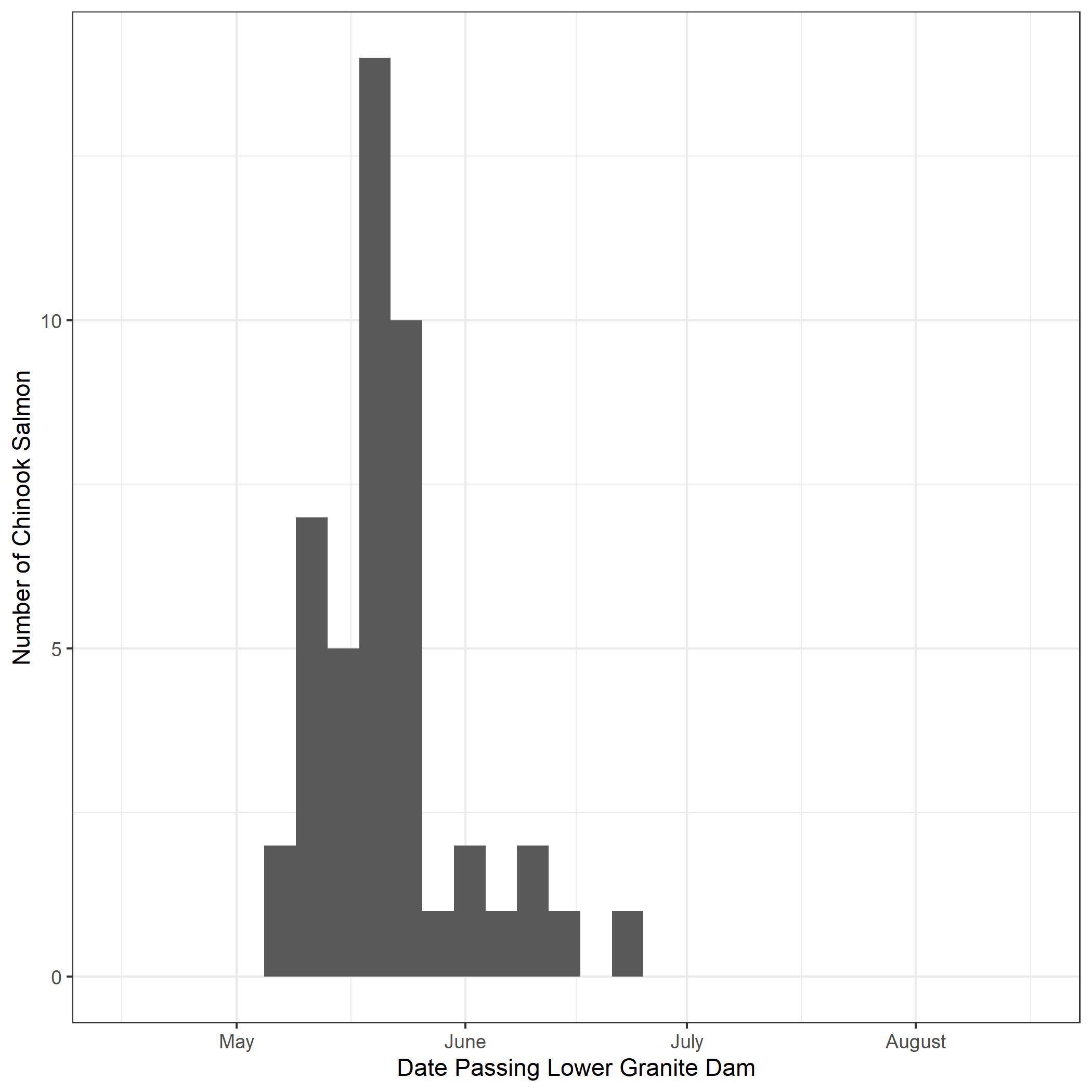
Finally, we can see when these fish arrive on their spawning grounds. Many of these fish traveled from Lower Granite Dam to Marsh Creek in about a month. This part of the trip covers 389 miles and 5,700 feet of elevation along one of the furthest and highest migrations of any salmon population in the world. Several fish have also passed the array in the last week but it is likely that those fish were holding a short distance downstream and are now moving upstream to their preferred spawning grounds in the headwaters Marsh Creek because spawning activity will begin any day now.
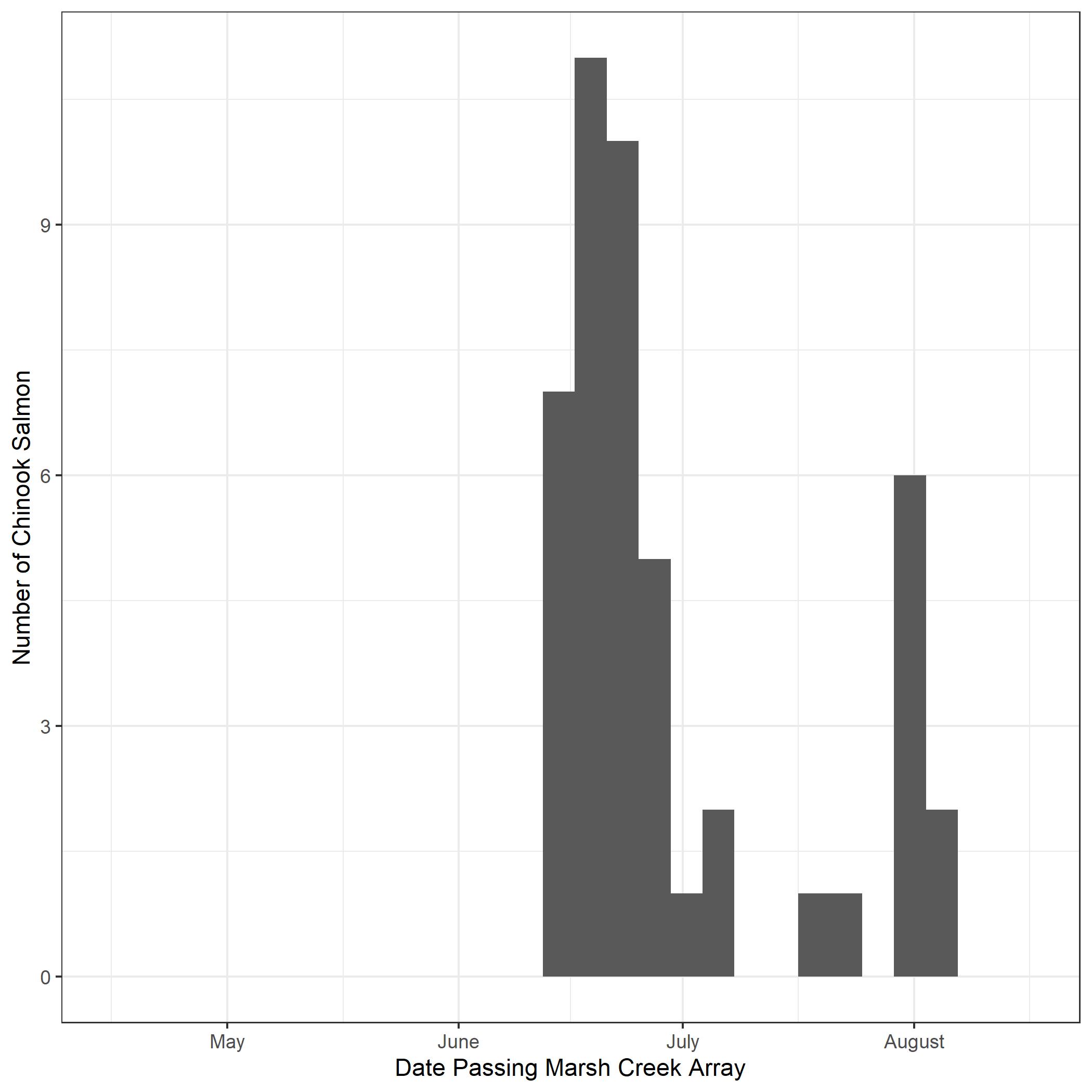
Over the next month IDFG staff will conduct weekly counts of redds that these salmon build in Marsh Creek. We will also scan any carcasses we find for the same PIT tags that were detected all throughout their life cycle.
For more information on Idaho's Wild Salmon and Steelhead click here.

